Feeling roasted by sizzling heat waves but want smart hacks on how to keep your home cool without ac? Around 14 million U.S. households still have no air conditioning, making summer heat tough—and risky for your health.
Our guide gives you easy, effective tricks like optimizing ceiling fans, blocking sunlight with window coverings, and using simple evaporative cooling methods to chill out naturally at home.
Read on and learn seven fresh ways to beat the heat in 2025!
Key Takeaways
Fans placed correctly can lower your home’s temperature by 3-5 degrees—set ceiling fans counterclockwise in summer to push cool air downward.
Keep windows closed during daytime and open them at night to reduce cooling costs by up to 30%; blackout curtains can help by blocking sunlight and heat.
Insulation and weather stripping keep cool air inside; these fixes typically cost less than $20 and deliver noticeable results.
Appliances add heat inside your home, so use washers and dryers after sunset, and skip using your oven during hot weather.
Natural cooling methods often help—hang damp sheets in open windows or relax in your basement, which usually stays 10-15 degrees cooler than rooms upstairs.
Table of Contents
Use Fans Effectively
Fans can cool your home fast without the high energy costs of air conditioning. Place box fans and pedestal fans in key spots to create airflow that pushes hot air outside while bringing cool breezes in.
Create a cross breeze with multiple fans
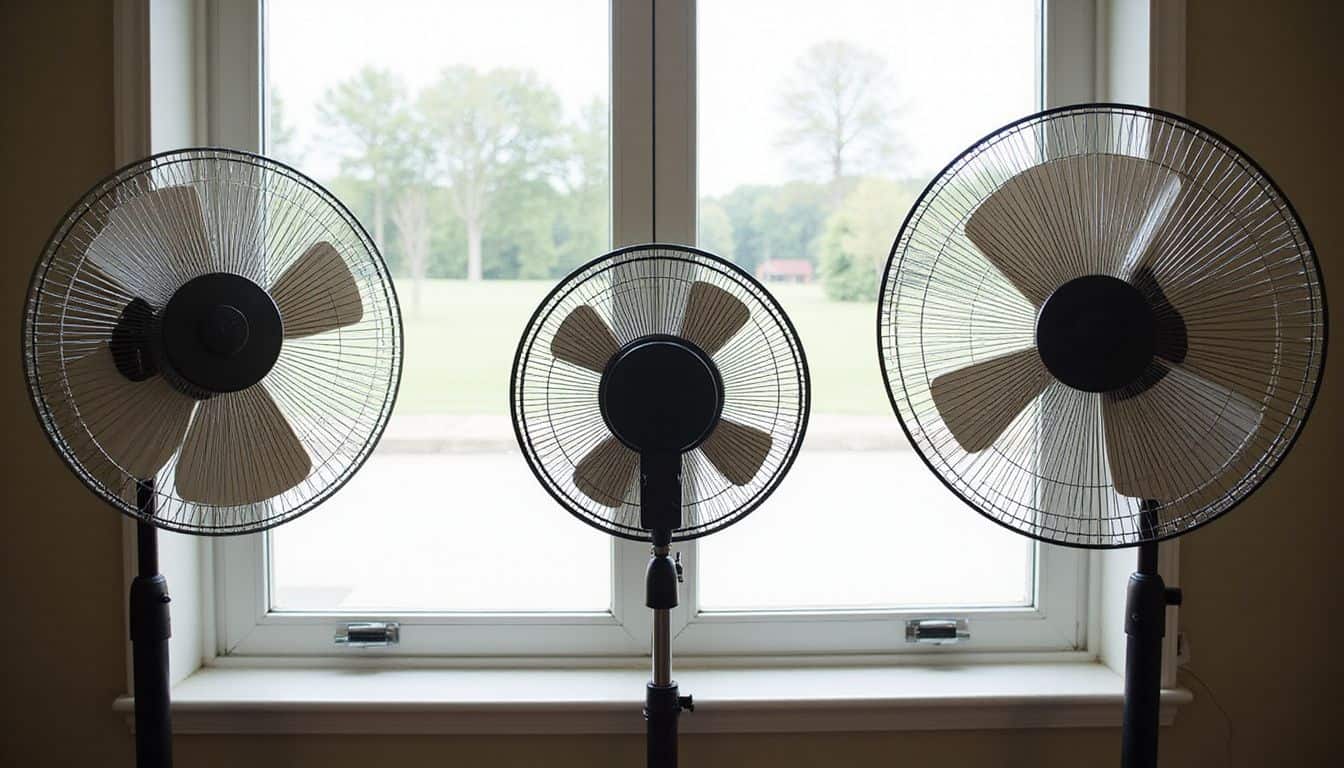
A cross breeze can quickly cool your home without expensive air conditioning. Just set up two fans facing each other—one draws cool air inside, the other pushes hot air outside. This balanced airflow can lower indoor temperatures by around 3 to 5 degrees.
Box fans are perfect for this and usually cost just $30 to $200. Ideally, place one fan facing inward on your home’s shady side, and the other pointed outward on the sunny side.
Smart fan placement matters a lot for summer comfort. Placing a pedestal fan in the room’s center can boost the effectiveness of your cross breeze. This gentle airflow moves across your skin, evaporating sweat faster and helping you feel cooler—even without actual temperature changes.
For flexibility and convenience, consider grabbing Portable fans from HunterFan, which you can easily move wherever needed.
Your body will feel relieved and refreshed, especially on sticky, humid days where the heat seems endless.
Set ceiling fans to rotate counterclockwise
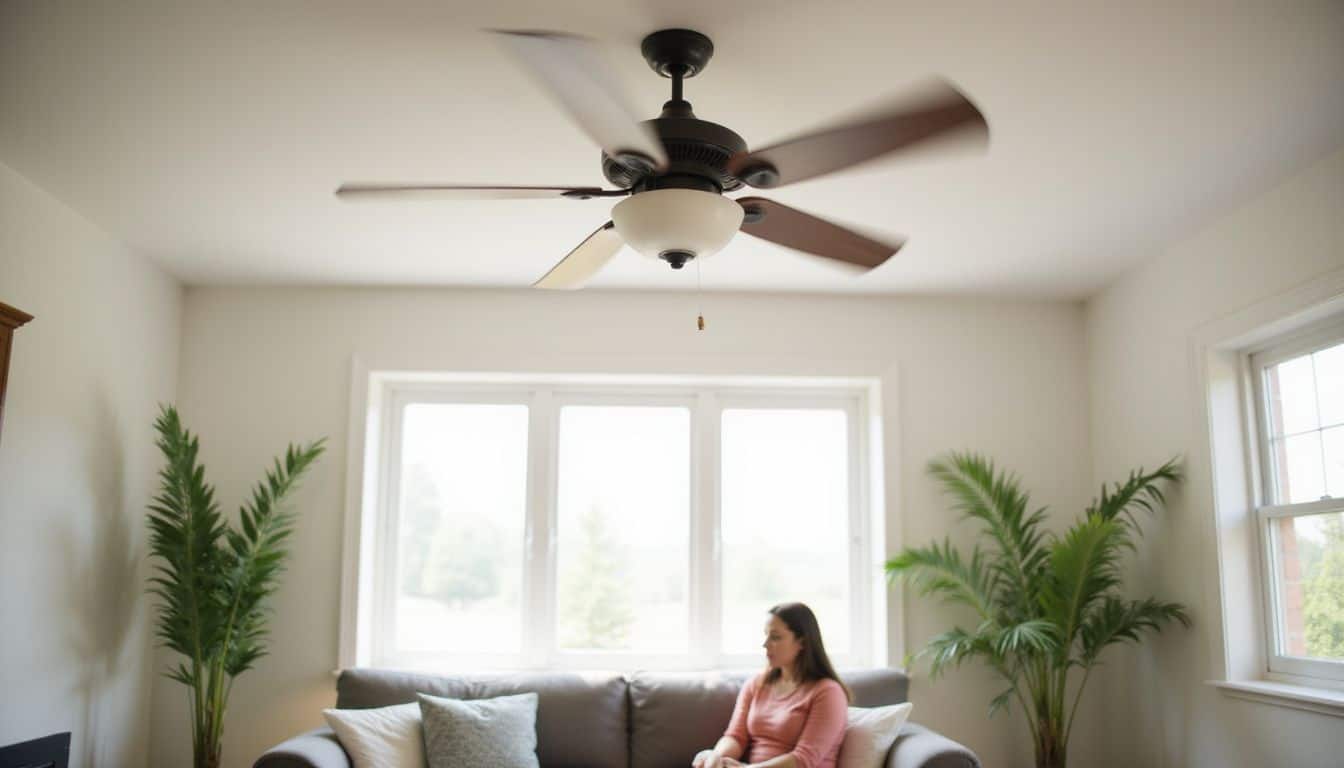
Your ceiling fan holds a hidden power to fight summer heat. Most fans come equipped with a simple switch you might not even notice—a switch that controls blade rotation. In hot weather, turn the setting to counterclockwise.
That direction pushes cool air straight down, creating a refreshing breeze using wind-chill effect. Make sure the fan blades tilt at least 12 degrees for ideal cooling efficiency. You’ll quickly feel more comfortable, even though the actual temperature remains the same.
The direction of your ceiling fan can make the difference between comfort and misery on hot days.
Ceiling fans only use about 50 watts of energy, while air conditioners consume roughly 3,500 watts. This quick switch adjustment cuts energy costs and boosts comfort at the same time.
With blades rotating counterclockwise, cool air moves downward onto your skin, making the space feel several degrees cooler. Soon, we’ll talk about sealing and insulation tips that help keep cool air inside, improving your home’s comfort level even more.
Use window fans to push hot air out
Window fans can make a big difference in cooling your home by forcing warm air outside. Just set these fans in windows on the sunny side, facing outward, letting hot air escape. This action creates negative air pressure inside, drawing cooler breezes in from other windows—pretty simple yet effective.
Using window fans helps reduce electricity costs, too, since the air conditioner won’t have to run as much. For the best cooling effect, use window fans later in the evening, once outdoor temperatures fall below indoor readings.
One handy tip is to use two fans together. Position one fan facing outward to push hot air out and another facing inward in a shaded area to bring cooler air inside. Doing this creates a steady cross-flow of fresh, comfortable air, perfect for cooling down rooms fast after sunset.
Next up, let’s check out ways to use windows strategically during daytime hours to keep your home cool and comfortable.
Optimize Window Usage
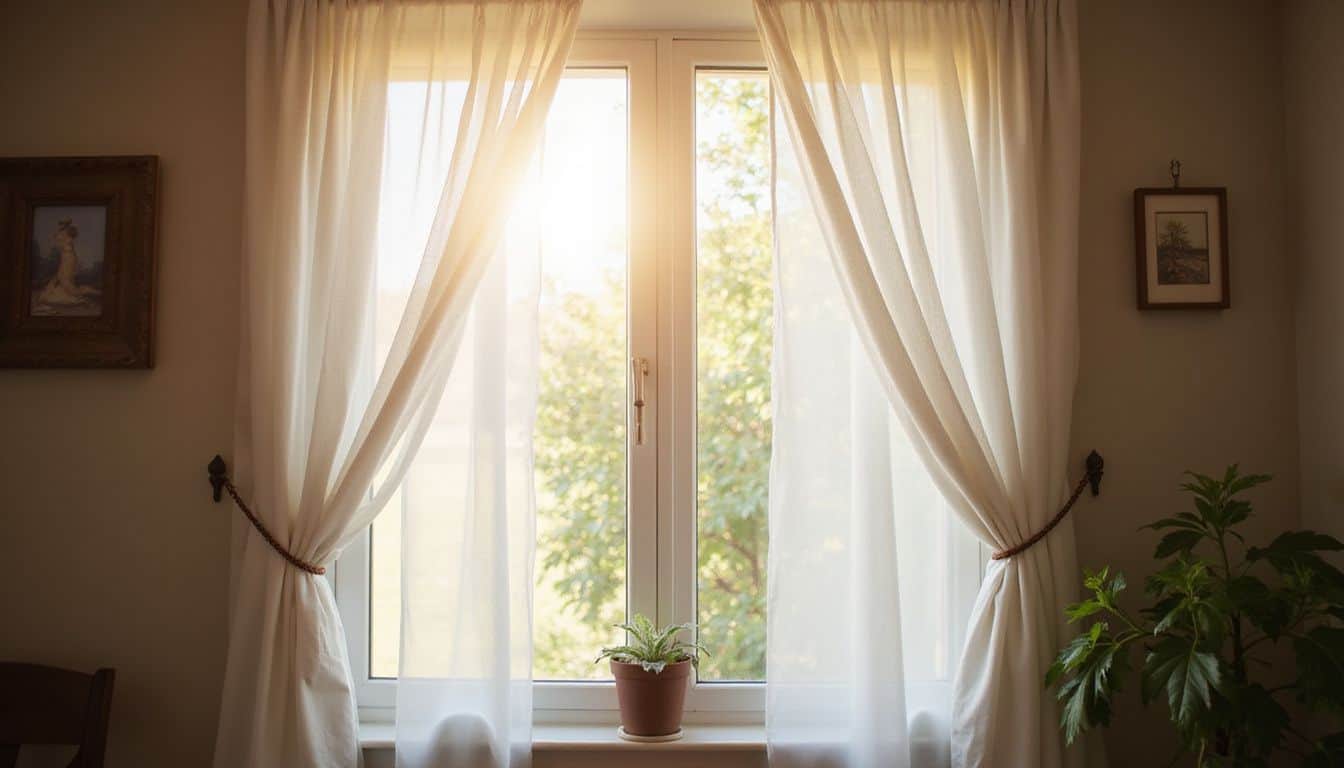
Your windows play a huge role in keeping your home cool. Smart window use can cut your cooling costs by up to 30% during hot summer months.
Keep windows closed and covered during the day
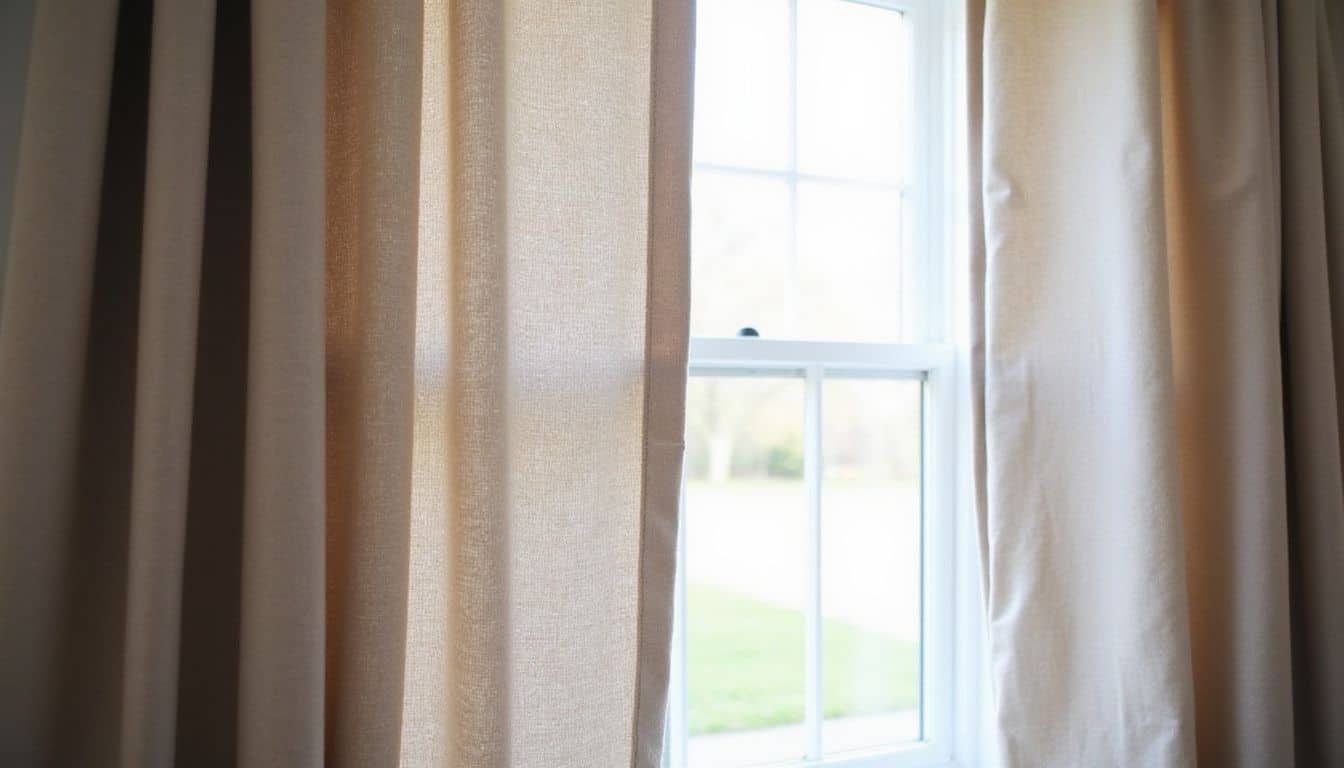
Sunlight turns windows into heat magnets during daylight hours. Keep windows shut tightly, and cover them with medium-colored curtains backed in white to reflect heat. Last summer, my neighbors lowered their cooling bills by 30% using this easy trick.
Blackout curtains perform even better—they fully block sunlight. After putting them up in my bedroom, I noticed the room cooled by several degrees almost immediately.
The best defense against summer heat is to stop it before it enters your home.
Fans also make a big difference if used in smart ways to spread cooler air throughout your living spaces.
Open windows at night to let in cool air
Night-flush ventilation can feel like magic during hot summer months. After sunset, once the outside temperature falls below your indoor temperature, open your windows wide. Letting cooler nighttime air flow in pushes out stale heat that built up inside all day.
At my own place, I’ve lowered cooling expenses by about 30% with this easy method. It’s all about timing—close your windows and blinds early each morning, trapping cooler air inside.
Double-hung windows give you the best results. Open both upper and lower sections to boost airflow throughout your house. Because hot air naturally rises, it can head out through the upper opening while cooler air streams in below.
This natural cooling method costs you nothing and fits easily into your home’s existing design. For even faster cooling, set up a fan in the window—it pulls in cooler air quicker and pushes hot air right out.
Improve Insulation and Sealing
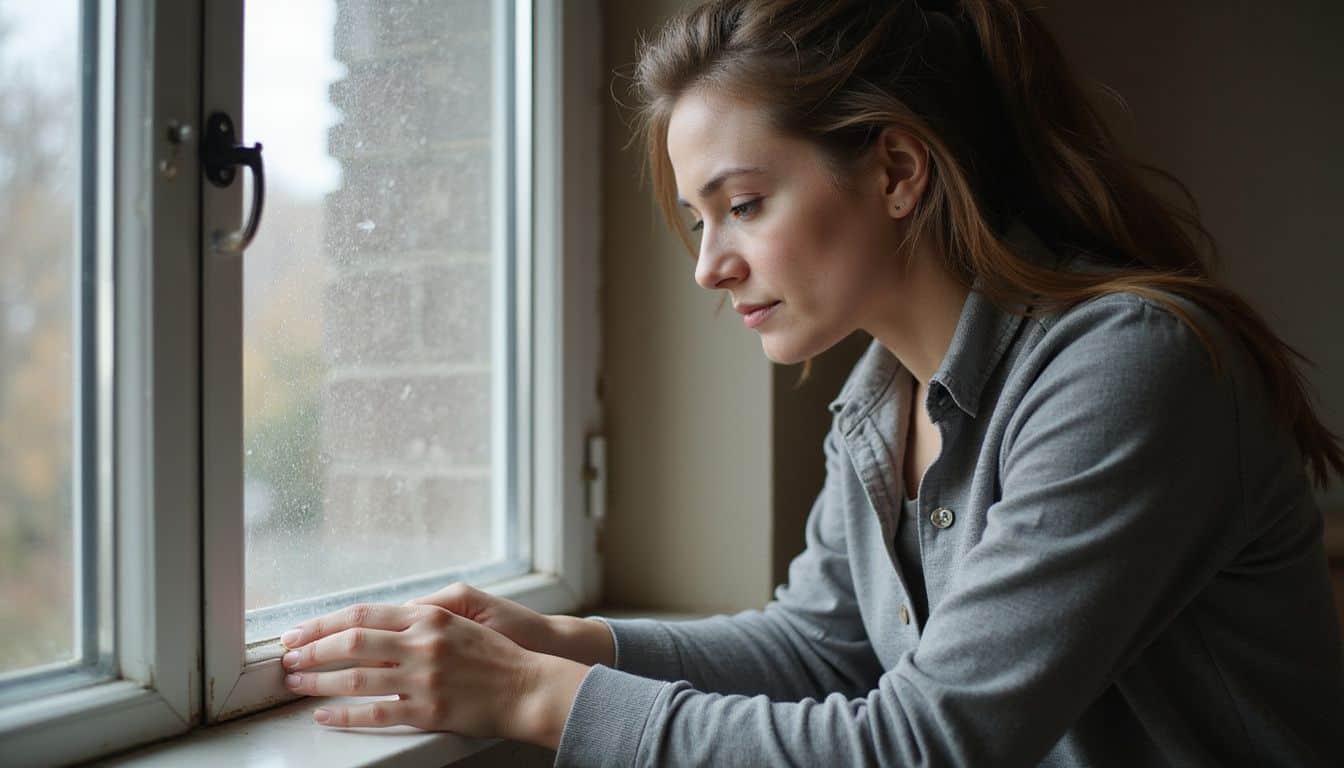
Your house leaks cool air through tiny gaps around doors and windows. Proper sealing and insulation blocks heat from entering your home and keeps the cool air inside where you want it.
Add weather stripping to doors and windows
Drafty windows and doors drain money from your wallet and turn rooms into ovens during hot summers. I tackled this issue myself by installing weather stripping—a simple fix costing less than twenty bucks.
This affordable solution seals the gaps around doors and windows, keeping hot air outside where it belongs. Foam or rubber strips create an airtight seal, locking cool air comfortably indoors.
Most hardware stores carry easy peel-and-stick weather stripping, making installation quick—even for someone new to DIY.
The smallest cracks can lead to the biggest temperature changes in your home.
For even better results, combine weather stripping with energy-efficient windows rated at a U-factor between 0.22 to 0.23. These windows do a much better job at blocking heat from the sun compared to standard glass.
This combination seals your home tight and protects you from the danger of old homes, which usually don’t have enough insulation.
Next, we’ll check out how updated insulation in attics and walls can reduce cooling costs even more.
Update insulation in walls and attic
Your walls and attic need good insulation to trap cool air during hot weather. Without adequate insulation, up to 35% of cooled air escapes through your walls—wasting both money and comfort.
Last summer, I installed fresh attic insulation at home; my energy bills dropped by close to $50 a month afterward. A standard-sized home around 2,000 square feet costs between $3,000 and $10,000 for professional insulation installation.
Yes, that’s a bit steep at first, but the investment quickly pays off through lower monthly utility expenses and a cozier feel indoors. Weatherstripping your doors and windows also keeps humid air from sneaking in and making rooms sticky.
Now, let’s talk about appliances—specifically, how to reduce their heat and keep your rooms feeling cooler.
Limit Heat from Appliances
Your kitchen gadgets make your home hotter than you might think. Ovens, dryers, and even small devices pump heat into your rooms during summer months.
Avoid using the stove or oven
Cooking on a stove or baking in the oven adds extra heat to your home. A typical oven can bump your kitchen’s temperature up by 10 degrees or more—making your space feel like a sauna.
These large appliances crank out serious heat, especially in warm weather. On hot days, consider outdoor cooking by firing up your grill instead.
Microwaves require less energy and produce minimal heat compared with ovens or stoves. Electric pressure cookers and slow cookers also help keep indoor temperatures down. They release far less heat, making hot-weather meals easy and comfortable.
The kitchen is the hottest room in summer homes because of heat-generating appliances.
No-cook meals are ideal during summer heat waves—think sandwiches, cold pasta salads, or fresh greens. Grocery stores often sell rotisserie chickens and ready-to-eat side dishes, eliminating the need for indoor cooking.
This strategy keeps your home cooler while making delicious dining simple and stress-free.
Limiting the use of other household appliances can also help reduce indoor temperatures even further.
Use large appliances like washers and dryers at night
Your washer, dryer, and dishwasher put out serious heat while they run. I found this out the tough way, last summer, after running a full load of laundry around noon—my living room felt more like a sauna than a comfy spot.
Big appliances like these release plenty of extra warmth, quickly turning your comfortable home into an oven-like space. The smart thing to do is wait until evening, after the sun sets, to do laundry and dishes.
Evening chores make it easier to keep your home cool, and they help your air conditioner work less. Plus, many power companies charge cheaper rates in the evening, meaning you’ll spend less money while staying more comfortable.
Unplug unused electronics
Running washers and dryers at night can reduce indoor heat—but devices in your home may still add warmth during the day. Electronics like TVs, computers, and game consoles quietly release heat, even when turned off.
This excess warmth builds steadily, making rooms stuffy and harder to cool in summer months.
Consider unplugging gadgets that sit idle. Using a power strip helps: just flip a single switch, and several devices shut down instantly. This simple practice cuts your electricity use, lowers monthly bills, and keeps rooms noticeably cooler.
Many people overlook that chargers plugged into outlets continue to draw power and generate small amounts of heat. Even minor adjustments—like unplugging these chargers—can noticeably improve indoor comfort during scorching summer days.
Adjust Lighting and Bedding
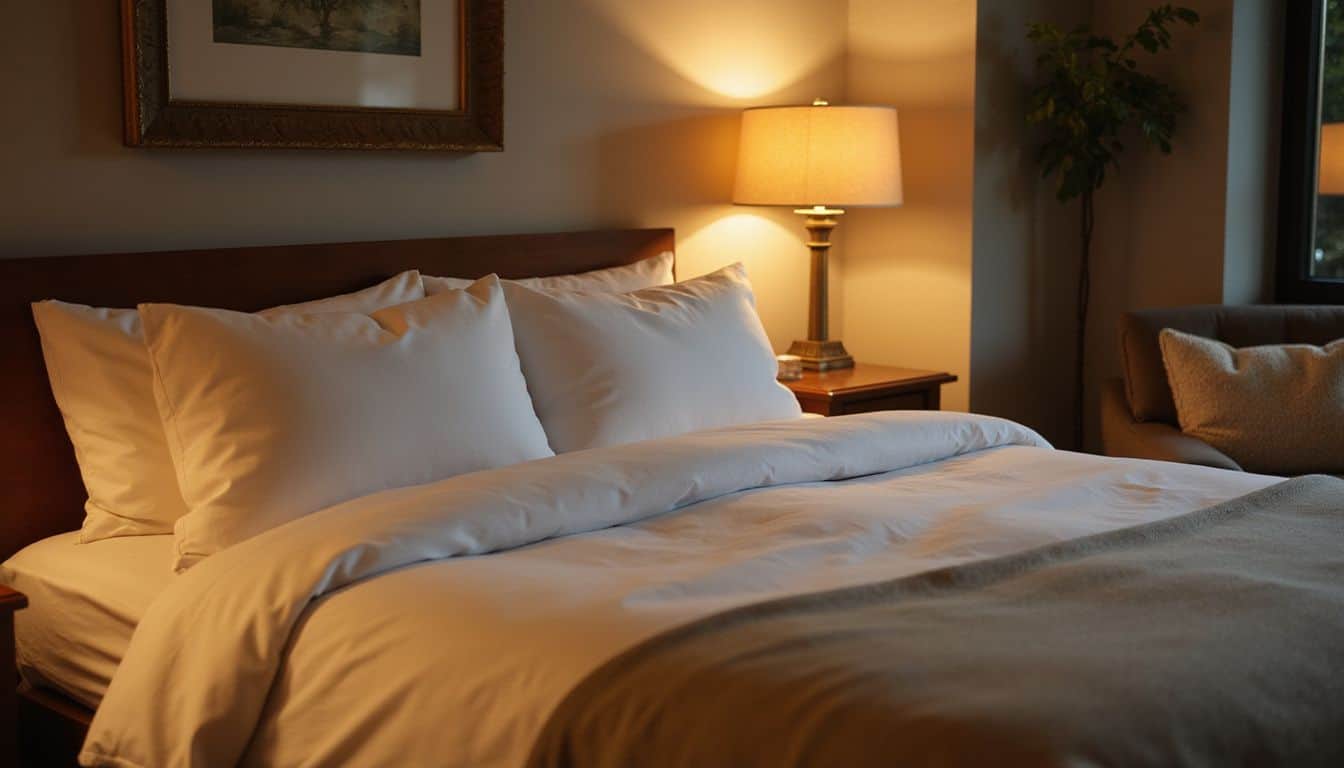
Switch to LED bulbs and light cotton sheets to slash heat and sleep better—check out our next cool-down trick that will make your home feel like a beach resort.
Replace incandescent bulbs with energy-efficient options
Those old bulbs in your home might secretly be heating things up more than you’d realize. LED and compact fluorescent lights (CFLs) use around 75% less energy compared to traditional incandescent ones.
Plus, energy-efficient bulbs give off about 90% less heat while they’re running—that means cooler rooms and lower energy use. Changing bulbs helps your wallet and your comfort, especially on those scorching hot days.
Start swapping bulbs first in areas you spend the most time, like your living room or kitchen, to quickly notice a real difference.
Lighting choices can really affect the comfort inside your house. Traditional incandescent bulbs work a lot like tiny heaters, constantly adding unwanted heat. ENERGY STAR-rated LEDs stay cool even after hours of use, giving your home a gentler, cooler feel.
Without those tiny glowing heat-makers, your rooms can easily feel a few degrees cooler during hot weather. Even your bedding matters for sleeping cool at night—it’s another simple thing to consider for hot evenings.
Use lightweight, breathable bedding
Your bed setup can really decide how well you sleep on hot nights. Last summer, I switched over to bamboo-rayon sheets—and the comfort was instant. These sheets absorb sweat quickly and dry fast, unlike cotton, which tends to stay wet.
Good-quality cotton, Tencel, and bamboo-rayon are all excellent choices for warmer nights. They allow air to flow over your skin, helping you avoid feeling sticky and uncomfortable.
Swap heavy comforters out for a lightweight cotton blanket in hot weather. Body temperature naturally drops once you fall asleep, so breathable bedding helps speed things along. Lots of guys overlook this simple fix and end up tossing and turning all night.
A thin blanket provides coverage without holding too much heat near your body. Plus, this easy adjustment costs way less than leaving the AC blasting nonstop.
Leverage Natural Cooling Techniques
Natural cooling tricks like hanging wet sheets in front of windows or spending time in your basement can drop your home’s temperature by up to 10 degrees without using any power – read on to learn how these simple methods work with your body’s cooling system to fight heat even on the hottest days.
Spend time in the basement or lowest level of the house
Heat naturally rises inside your home, making upstairs rooms significantly warmer than lower levels. Because basements sit underground, temperatures there stay steady and cooler—it’s like built-in insulation from the earth itself.
Even without air conditioning, basements usually remain about 10 to 15 degrees cooler than upper floors during summertime. A simple fan set up downstairs can boost airflow and turn your basement into a relaxing, comfortable hangout spot with very little effort.
If your home has multiple floors but no basement, your ground-level rooms remain the next best place to beat summer heat. Shift daily activities—like working, relaxing, or having meals—to rooms on your cooler first floor during hot spells.
For extra comfort, place a box fan at the bottom of your staircase; it pushes cooler air upward to hotter rooms. Using this easy, passive cooling trick can lower indoor temperatures and trim energy bills at the same time.
You can also try hanging damp sheets in front of open windows; as moisture evaporates into the air, it creates an extra cooling effect to ease summer heat.
Hang damp sheets in front of windows for evaporative cooling
Damp sheets can do wonders on scorching days. Last summer, I tried hanging wet sheets in front of my windows and felt an immediate change. The idea is simple—hot air passes through the wet cloth, water evaporates, and colder air flows into your room.
This method lowered the temperature in my home, without resorting to fans or air conditioning. The sheets work like natural evaporative coolers, turning hot, dry air into cool, pleasant air.
This trick performs best in dry areas, because low humidity lets the water evaporate faster. All you need is clean sheets, water, and something sturdy to hang them with. I prefer clothespins to secure my sheets directly onto curtain rods or window frames.
Be sure they’re damp enough to cool the breeze, but not dripping wet—that way, your floor and furniture stay dry. As air moves through these simple homemade coolers, your room can become several degrees cooler without any electricity use at all.
Enhance Outdoor Cooling Methods

Plant tall trees around your home or install awnings to block the sun and create cool zones in your yard – click below to learn more cooling tricks for the hot months ahead.
Add shade with outdoor landscaping or awnings
Trees and shrubs offer easy shade and keep the sun from warming your house. Last summer, I planted three maple trees on my home’s west side, and cooling bills dropped by around 15%.
Tall bushes also perform well near windows that catch direct sunshine.
Awnings provide shade and upgrade your home’s look at the same time. These covers—available in fabric or metal—hang above doors and windows to stop sunlight before it ever enters.
My neighbor put up black canvas awnings on his south-facing side, noticing cooler indoor temperatures right away.
Choosing the right landscaping can turn your yard into a comfortable, cool zone. Grass and greenery release moisture through transpiration—a natural process that helps cool the air nearby.
Thoughtful placement of trees can block heat from the sun, but still let cooling breezes flow freely.
Home cooling methods will likely change plenty by 2025, so let’s check out what’s coming next.
Use reflective or light-colored roofing materials
Light-colored roofs may save you big on summer cooling bills—they bounce sunlight right off your home. These special materials reflect around 60-90% of sunlight, unlike dark shingles, which absorb the heat.
Your home stays cooler without needing to blast the A/C all day. Metal roofing works especially well for this purpose. Metal lasts considerably longer than most other roofing choices, too.
Costs usually run from around $5,500 to $15,000 for an average-sized home, but energy savings help you earn that back over time.
Replacing the whole roof isn’t necessary right from the start. You can try UV-blocking window films first, or apply reflective coatings onto your existing roof. These simple upgrades reduce solar heating and keep indoor temperatures several degrees cooler.
The effect is strongest in hot climates that have lots of sunny days, since your A/C likely runs all the time. Easing your HVAC’s workload reduces energy expenses and helps your air conditioning equipment last much longer.
How Will Home Cooling Strategies Evolve in 2025?
 Smart home cooling will become mainstream by 2025. Future heat pumps will cool twice as effectively as a standard wall-mounted AC unit.
Smart home cooling will become mainstream by 2025. Future heat pumps will cool twice as effectively as a standard wall-mounted AC unit.
They’ll sync with your smartphone and automatically adjust according to upcoming weather conditions. Fans in your home may soon include built-in filters, helping clean the air while keeping you comfortable.
Solar-powered cooling devices will also be more widespread, helping you cut energy costs during the summer.
In dry regions, next-gen swamp coolers will save water and cool better than current models. Cooling fabrics for clothing and bedding will keep you comfortable—no gadgets necessary.
Special window films, becoming popular in homes, will effectively block heat coming in but still allow plenty of daylight. Newer films will offer stronger heat protection than those you find today.
Even rooftops will soon have cooling technology built in, reflecting extra sunlight away compared to current roofing materials.
People Also Ask
What are quick ways to cool down without using central air conditioning?
You can place ice packs on pulse points—like your neck or wrists—to cool yourself quickly. Exhaust fans keep air moving, helping fresh air flow through your space. Or try making your own air cooler; just place ice in front of a fan and let the cool breeze flow. Closing curtains and blinds during daytime hours keeps sunlight out, preventing rooms from heating up.
How do lightbulbs affect room temperature?
Incandescent bulbs put out more heat than energy-efficient LEDs or compact fluorescent bulbs. Swapping your old incandescent bulbs for LED ones reduces room heat, and it also cuts your electric bill.
Why should I avoid using my oven in summer?
Ovens and stovetops easily heat your home, making rooms stuffy and uncomfortable. Instead, opt for cooking outdoors on a grill, preparing meals that need no heat, or using a slow cooker. These alternatives help your kitchen stay cool during summer months.
Can fans really help when it’s very hot?
Absolutely! Fans circulate air and help evaporate sweat, making you feel cooler. Place your fan near an open window after sunset to draw in fresh nighttime air. Yet, fans alone won’t protect you against heat stroke in extreme temperatures—stay cautious.
Does humidity make a room feel hotter?
High humidity can definitely make a room feel hotter and sticky. Using a dehumidifier pulls moisture out of the air, keeping your home drier and making it feel noticeably cooler—even if you’re going without air conditioning.
What’s the best time of day to do housework and keep my home cool?
Try doing laundry, baking, and any chores that heat up the home either early in the morning or later at night. Appliances like your clothes washer, dryer, and oven all release heat, which raises indoor temperatures—so your timing makes a noticeable difference.
References
https://www.cnet.com/home/this-quick-trick-cools-my-bedroom-without-blasting-ac/
https://saveonenergy.ca/en/For-Your-Home/Advice-and-Tips/Seasonal-ceiling-fan-direction
https://time.com/6985139/how-to-use-fan-air-conditioning/
https://www.avail.co/education/articles/7-tips-for-cooling-a-room-without-ac
https://www.efficiencyvermont.com/blog/how-to/summer-guide-to-energy-savings-comfort
https://www.cnet.com/home/energy-and-utilities/weatherstripping-is-the-home-hack-to-keep-utility-bills-low/ (2024-10-16)
https://usainsulation.net/tips-to-keep-your-home-cool-this-summer
https://one5c.com/keep-house-cool-in-summer-136966378/ (2024-08-29)
https://mikediamondservices.com/blog/6-ways-cool-without-turning-ac/
https://www.thisoldhouse.com/heating-cooling/21015442/10-ways-to-beat-the-heat
https://www.ars.com/blog/stay-cool-without-ac
https://www.sleepfoundation.org/bedroom-environment/how-to-cool-a-room-during-summer
https://www.buzzfeed.com/samanthatoscano/ways-to-cool-your-home
https://www.clutter.com/blog/posts/how-to-keep-house-cool-without-ac/ (2024-11-28)
https://www.budgetdumpster.com/blog/how-to-keep-house-cool-without-ac
https://www.energy.gov/energysaver/cool-roofs
https://johncipollone.com/hvac-resolutions-for-2025-improving-home-comfort/ (2024-12-28)

